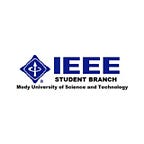The world is moving to an era where it will be driven by data and the ways we live, data science will have a major role in it.Smartphone apps are playing a big role in the response to the COVID-19 pandemic. These apps are being used to track infected people, social distance, detecting COVID-19 symptoms, self-quarantine guidelines, the latest communication to the citizens, and ease the burden on healthcare staff. Discussing the major pillars that are leading the world today are given below:
Artificial Intelligence
AI techniques have grown rapidly in recent years in the context of computing with smartphones as well as laptops and computers. IT allows devices to function in an intelligent manner. It can be applied to various types of mobile data such as structured, semi-structured, and unstructured.
AI based models and their usage in practice can be seen in many intelligent mobile applications, such as personalised recommendation, virtual assistant, mobile business, healthcare services,and even the corona-virus COVID-19 pandemic management in recent days.
AI works by combining large amounts of data with fast, iterative processing and intelligent algorithms, allowing the software to learn automatically from patterns or features in the data.
Technologies that come under Artificial Intelligence are:
- Machine Learning
- Neural Network
- Deep Learning
- Computer Vision
Recommender System
Recommender systems are typically developed to overcome the problem of information overload by aiding users in the search for relevant information and helping them identify which items (e.g., media, product, or service) are worth viewing in detail.
Data required for recommender systems stems from explicit user ratings after watching a movie or listening to a song, from implicit search engine queries and purchase histories, or from other knowledge about the users/items themselves.
Sites like Spotify, YouTube or Netflix use that data in order to suggest playlists, so-called mixes, or to make video recommendations, respectively.
Natural language processing (NLP)
It is a technique concerned with giving computers the ability to understand text and spoken words in much the same way human beings can. NLP techniques can make it possible for computers to read text, hear speech, interpret it, measure sentiment or to mine opinions, and eventually determine which parts are important in an intelligent system. to extract sentiments associated with positive, neutral, or negative polarities for specific subjects from a text document, an NLP-based methodology can be used.
A large amount of content read on mobile devices is text-based, such as emails, web pages, comments,blogs, or documents. NLP techniques particularly, text mining extracts patterns and structured information from textual content that could make the apps smarter and intelligent, in which we are interested.Thus, document summarization based on NLP might be the potential solution to provide a summary with high quality and minimal time. NLP techniques can play a significant role to build AI based modelling depending on the target application and corresponding data type and characteristics.
Internet of Things(IoT)
The Internet of Things (IoT) refers to a system of interrelated, internet-connected objects that are able to collect and transfer data over a wireless network without human intervention.
The personal or business possibilities are endless. A ‘thing’ can refer to a connected medical device, a biochip transponder (think livestock), a solar panel, a connected automobile with sensors that alert the driver to a myriad of possible issues (fuel, tire pressure, needed maintenance, and more) or any object, outfitted with sensors, that has the ability to gather and transfer data over a network.
IoT devices contain sensors and mini-computer processors that act on the data collected by the sensors via machine learning. Essentially, IoT devices are mini computers, connected to the internet, and are vulnerable to malware and hacking.
Augmented Reality
Augmented Reality (AR) makes the real-life environment around us into a digital interface by putting virtual objects in real-time. Augmented Reality uses the existing environment and overlays new information on the top of it unlike virtual reality, which creates a totally artificial environment. Augmented Reality can be seen through a variety of experiences. Recent developments have made this technology accessible using a smartphone which led to development of wide variety of augmented reality apps.
Augmented Reality Apps are software applications which merge the digital visual (audio and other types also) content into the user’s real-world environment. There are various uses of AR software like training, work and consumer applications in various industries including public safety, healthcare, tourism, gas and oil, and marketing.
The AR browsers can enhance users’ camera display with contextual information. For example, when you point your smartphone at a building, you can see its history or estimated value.
Follow us on Instagram, Facebook, Twitter, LinkedIn for more updates on blogs. Do suggest if you want blog on a specific topic!
